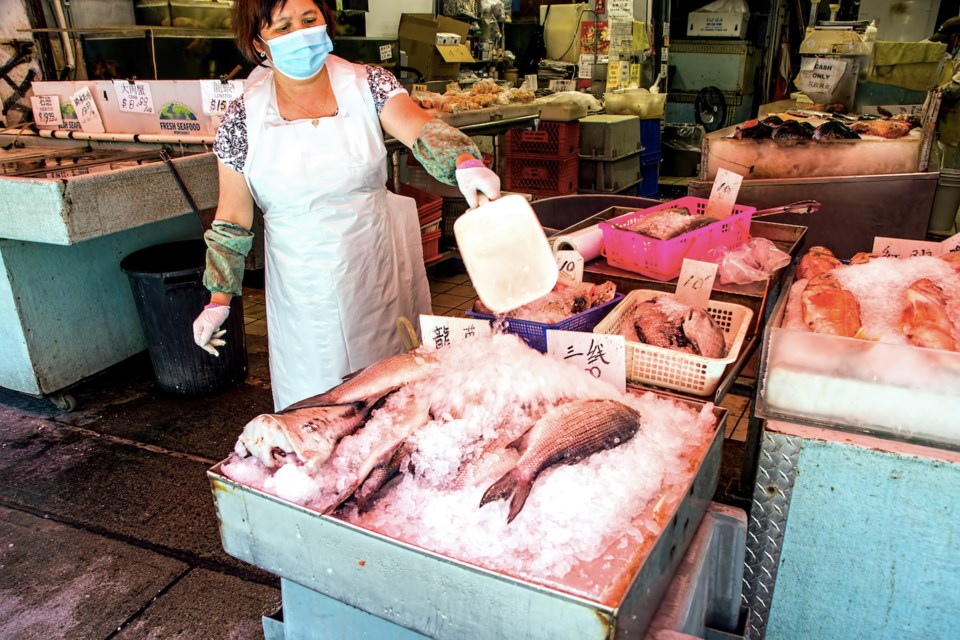The pandemic and the resulting decline in office-worker numbers, retail foot traffic and tourists seriously dented business in Chinatown since early in 2020.
But the historical community is poised to rebound as the pandemic struggle has abated with the end of the circuit-breaker health regulations, officials say.
Jordan Eng, president of the Chinatown Business Improvement Association (BIA), said June’s stretch of warm weather has brought a surprising number of patrons out to the neighbourhood’s restaurants and bars – especially in the early evenings.
“I did an interview on TV on a Tuesday night, and Keefer Street was hopping,” Eng said. “People were out on the patios. It reflects how much Chinatown has evolved as a destination; we have 60 food-services-related businesses in Chinatown, and about 20 were opened within the last 10 years. It’s not cheap Chinese food; we have some of the top restaurants and bars in the city.”
Some challenges that were magnified by the pandemic. The lack of consumer foot traffic and the community’s proximity to Downtown Eastside led to a migration of drug use, mental health problems and homelessness into the neighbourhood.
That, in turn, discouraged the community’s sizable elderly population from leaving their homes, Eng said. The result was a vicious circle where fewer consumers on the streets led to the closure of more businesses, which in turn further limited the number of shoppers in the area.
“So there’s two levels of fear at play here in the neighbourhood: the fear of COVID and the fear of safety and cleanliness,” Eng said, adding that graffiti “is a big part of that,” because it affects how people perceive the neighbourhood.
“What we found is that stores were opening for short hours because of the foot traffic, and that snowballs into itself because if you aren’t open, people won’t come down. That has been the biggest struggle – and continues to be the biggest struggle.”
Eng added that the City of Vancouver has been better in helping this month, sending more street cleanup crews to maintain the neighbourhood. But he urges municipal officials to continue such efforts and not “forget about Chinatown” or lump it in with nearby communities when managing the city’s planning and resources.
“As a community, we are easy to set aside because we haven’t been as vocal as some others,” Eng said, noting the BIA met with council in 2019 to speak on the issue. “The key is sustainability. You can do it one day, and the people would return and mark things up again. If you can’t do the cleaning regularly, then you really haven’t done your job. We have a pretty high tolerance point in Chinatown, but it has really hit a tipping point this past year.”
Eng said the marketing direction of the BIA has shifted to “demystifying Chinatown” – changing its image to a destination retail neighbourhood rather than the low-cost model traditionally borne by the community to draw more business from within Metro Vancouver.
“You can’t just sit around and wait for the future,” Eng said. “So we’ve been pivoting towards local markets; we are active on social media in targeting certain demographics within a certain distance of Chinatown, and it has been fairly effective.
And as more office workers return, many who live in Strathcona will resume their walking commutes to and from downtown, Eng said. That would be the key in bringing back a renewed sense of vitality to Chinatown that had been a signature for the neighbourhood prior to the pandemic.
“I think people may be itching to get out, so I have to say I’m hopeful for more people to return to our retail stretch on Pender Street,” he said. “That’s the heart of Chinatown. If you can get that revitalized, then the elderly will return because they are comfortable – and they are the face of Chinatown. And once the school at the Chinese Cultural Centre returns, it would really start to bring people back.” •



